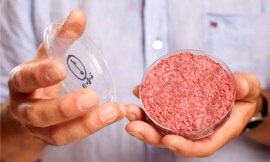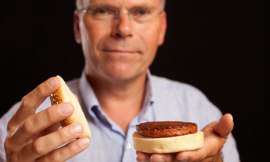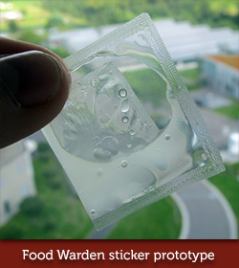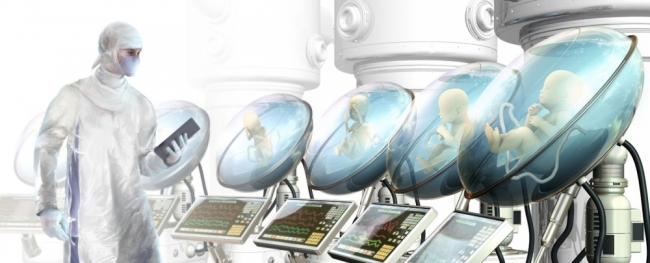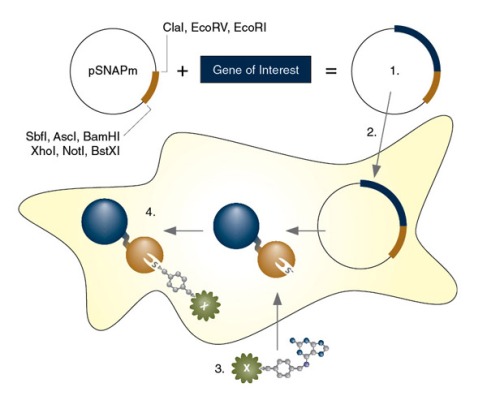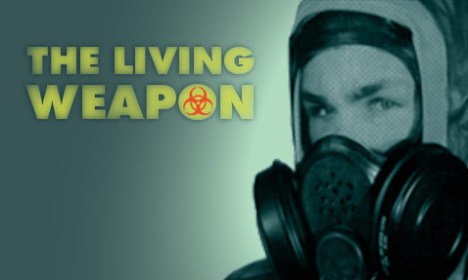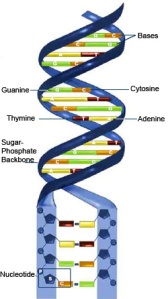Here I am again with some interesting new study I found!
Since my last post I encountered some new truly interesting research in a science magazine. It refers to a implementing synthetic biology on a whole new level. To fully understand this new concept, I will first repeat some basic biological knowledge so the clouds in your mind will vanish.
As I already showed in my second post (DNA EXPLORATION), proteins are coded in the DNA in specific regions, called the genes. The genes are built of sequences of bases and it is the sequence of these bases that hold the genetic code. There are four bases in the DNA, namely thymidine, cytosine, guanine and adenine. The collection of three following bases is called a codon and eventually will stand for one amino acid, which is a building block of proteins. Going from DNA towards proteins does not happen directly. First, the coding sequence for a protein is transcripted from DNA to mRNA (messenger RNA) and further by attaching ribosomes it is translated into a protein. This translation happens under influence of tRNA (transport RNA) that holds the complementary codon, the anti-codon, and the corresponding amino acid.
RNA is a homologue molecule of DNA in which thymidine is switched by uracil. So, thymidine is a base that only occurs in DNA and uracil is only present in RNA. When DNA is transcripted towards mRNA, the base thymidine gets exchanged with uracil. The corresponding RNA-codons will eventually get translated to amino acids and proteins.
The protein synthesis stops when a STOP-codon appears, by which the protein is released from the ribosome. There are 3 STOP-codons, namely the combination of bases, UAA, UAG and UGA. When we look at the possible codons and the available amino acid, it is notable that different codons encode the same amino acid. On how many ways can a codon exist? It is a simple statistical calculation. There are 3 places with 4 possibilities on each place: 43 or 64 ways! There are only 20 amino acids available for translation. This means with the 3 STOP-codons, there are still a lot of codons that encode the same amino acid.
Researchers have now succeeded to recode this natural way of protein synthesis. They remade a whole genome of E. coli and replaced every UAG STOP-codon with its equivalent UAA and they also deleted the instructions for making the release factor, that usually binds UAG to release the protein from the ribosome. With these changes UAG becomes meaningless.
Now that UAG holds no real function, the next step was to assign a new meaning to UAG during the protein production. The design stage of this new approach is off course not to held lightly. tRNAs with accompanying enzymes that would attach unnatural amino acids had to be created and brought inside the cells. UAG was reintroduced on specific places and now the unnatural amino acids could be built into proteins at will. By recoding this little piece of information a whole new world of chemical diversity of proteins can be entered.
For example, artificial amino acids could be added that give proteins unusual properties, such as the ability to bind to metals. This would result in novel ways of binding heavy metals in the environment, or in the development of new adhesives or dye. In pharmaceuticals, enzymes could be developed with specific binding places for malignant cells.
The introduction of these man-made proteins is obviously a fundamental step forward. It is even expandable, because so much of the genetic code is redundant (more codons encode the same amino acid) there might be other codons that could be reassigned. The possibilities with this new approach are unlimited once multiple codons can be recoded to translate into alien amino acids.
You might think, hey where is the catch with these GRO’s (genetically recoded organisms). Do they hold any threat towards the environment or healthcare? On first notice it is unlikely, the new created GRO’s even hold resistance towards viruses. Because when this virus uses the UAG stop codon, this can no longer be read. Too bad little virus, your days are over! Even an accidental release of these GRO’s holds no threat. When in contact with wild-type organisms, the recoded stop codons will be read as normal stop codons in natural cells, terminating the protein synthesis prematurely.
So, what would you say on this matter? Are these GRO’s innocent? Will they be harmless and stay harmless? Or would you say innocent until proven guilty? It is your choice!

